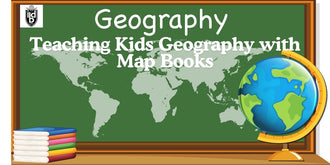"SOME IMPORTANT OR INTERESTING FACTS ABOUT THE SOLAR SYSTEM"- FAMILY OF THE SUN
SOLAR SYSTEM
Our Solar System is also known as the Family of the Sun as it has one star, the sun, the eight planets, and their satellites. The eight planets of our solar system are Mercury, Venus, Earth, Mars, Jupiter, Saturn, Uranus & Neptune. Every planet has its moon except mercury and venus. The main fun fact is that we can see the movement of the planets with our naked eyes with the help of a Telescope. The average or approx distance of the sun from the earth is 14,95,97,900 KM.
Now, Let's Learn about the various parts or planets of our Solar System:
1) THE SUN

The sun is the greatest member of the solar system. It is made up of mixtures of extremely hot gases like hydrogen, helium, carbon, nitrogen, oxygen, sulphur, silicon, iron, magnesium, etc. The sun is also the only source of the heat and light of the whole solar system. The sun takes a total of 25 days 9 hours and 7 minutes to completely rotate on its axis. The sun's rays travel at the fastest speed of 3,00,000 KM per second to the earth.
2) MERCURY

Mercury is our solar system's first and smallest planet. It's not even as big as the moon. Incredibly, the mercury is slowly but steadily decreasing day by day. Yes, it is true that mercury is steadily decreasing. The planet is estimated to be about 9 miles smaller than it was four billion years ago. Astronomers believe it is due to the cooling of the planet's iron core, which has solidified, and therefore, resulting in a reduction in the planet's volume.
Mercury has the most craters, giving it the appearance of the moon. The crater has a diameter of about 1,550 km (963 miles), which is large enough to fit a portion of Europe from Portugal to Germany. Because of its size, low gravity, and proximity to the sun. Mercury is unable to retain its moon. Mercury has a shorter orbit than the other planets in the Solar System. It takes one year for the orbit to rotate and approximately 88 Earth days (less than 3 months). Mercury, due to its thin atmosphere, cannot withstand the intense heat of the sun.
As a result, its temperature fluctuates dramatically. The temperature can reach 800 degrees Fahrenheit (427 degrees Celsius) during the day and -269 degrees Fahrenheit (173 degrees Celsius) at night. It does not have any rings due to its small size and low rate of gravity.
3) VENUS

Venus is the third planet of our Solar System. Venus is hotter than the mercury plant, despite the fact that it is far from the sun.
Except for Venus, which rotates clockwise on its axis, all planets in the solar system rotate anti-clockwise on their axis. After the Moon, the venus is the brightest planet as its clouds of sulfuric acid in the venus’ atmosphere make it reflective and shiny. Venus is best known for its exceptional brightness and is named after the ancient Roman goddess of beauty "Aphrodite." Venus is the earth's twin because its composition is mostly similar to that of the earth.
4) EARTH

Earth is a bit of a pear-shaped rather than a true sphere. Earth is made up of a mixture of 32.1 % iron, 30.1% oxygen, 15.1% silicon, and 13.9% magnesium, and it is mostly covered with 70% of water. The remaining 30% of the earth is made up of solid crust located above sea level. As a result, it is known as the continental crust. The earth's temperature is also suitable for life. One rotation on its axis takes 23 hours, 56 minutes, and 4.091 seconds.
5) MARS

Mars is the fourth planet of the solar system. The planet is almost 141 million miles away from the sun and takes around 8 months to get there from Earth. The mars planet is made of soil, rock, and dust made from the iron oxide that results in the red rusty-coloured surface of the planet. That’s why it is also known as THE RED PLANET of the Solar System. Mars has one biggest crater named Borealis Basin and it also covers 40% of mars surface.
6) JUPITER

Jupiter is the fifth & largest planet in the solar system. Jupiter is also for its beautiful stripes and large red spot. Jupiter is the fastest spinning planet in the solar system. The major fun fact is that Jupiter has 67 moons of its own. Another one of the most interesting fun facts about Jupiter is that it has the shortest day as compare to any other planet in the solar system. Its complete rotation only takes around 10 hours. Jupiter, just like the Sun, is mainly made up of hydrogen and helium. Jupiter contains the biggest ocean among the other planets and it’s known as the liquid hydrogen ocean.
7) SATURN

Saturn is the solar system’s sixth planet. Saturn is a flattened ball because it spins on its axis so fast or quickly. Saturn has its own 62 moons and it also looks like yellowish-brown in colour because of the particles of ammonia, phosphine, water vapour present in its atmosphere. We can see the planet with our own naked eyes in the sky at night by heading outside and see it. Saturn is made up of a mixture of gases that are hydrogen and helium.
8) URANUS

Uranus is the coldest as well as the third-largest planet in the solar system. And also as it rotates on its sides, due to this, it is known as the sideways planet. Uranus is in bright bluish-green color because of the methane present in its atmosphere. Uranus is surrounded by a set of 13 beautiful rings like Saturn planet and they are very thin and dark in colour. The fun fact of Uranus is that it spins in the opposite direction as Earth and the majority of the other planets.
9) NEPTUNE

Neptune is the fourth largest and the eight planet of the solar system. Neptune is originally the god of fresh water. Neptune is a ball of gas and ice, probably with a core of rocks. Neptune has 6 known planetary rings and atleast 14 confirmed moons. Temperatures on Neptune can drop to 51.7 Kelvin, or -221.45 degrees Celsius (-366.6 degrees Fahrenheit), at the peak of its clouds.

Note: Pluto in the wake of conclusive announcement made by the World’s premier astronomical body (IAU), hitherto regarded as the farthest and coldest planet of the solar system, has lost its planetary status now and has been placed in the category of a “Dwarf Planet.”
Basic Keywords:
- Telescope -It is an instrument that has curved mirrors and lens & it’s main use is to see the distinct objects clearly and properly.
- Extremely- To a very great degree.
- Crater- It is a big bowl-shaped cavity in the ground that is caused by the explosion or due to the impact of a meteorite.
Are these facts helpful to you? Please share your views in the comments section below.





















